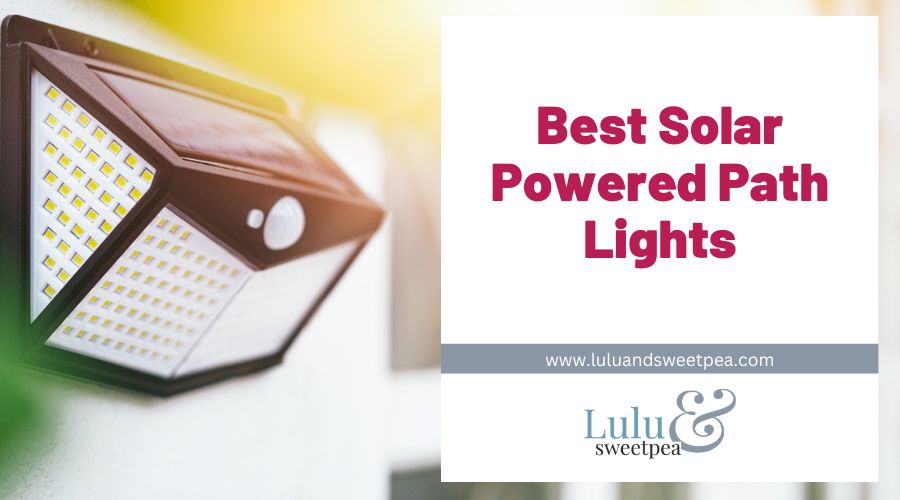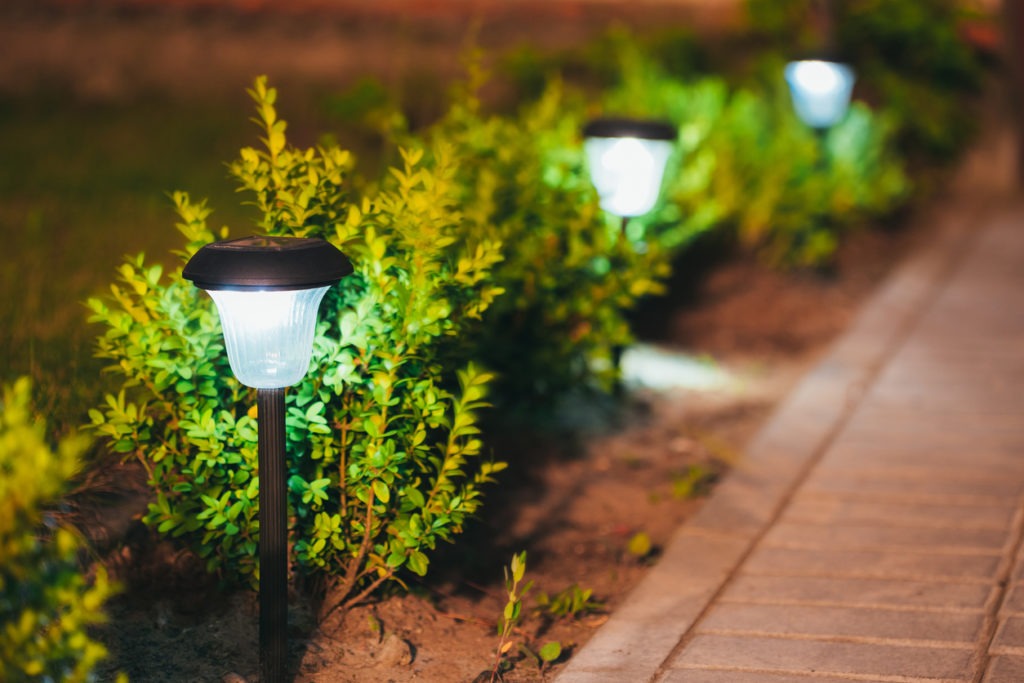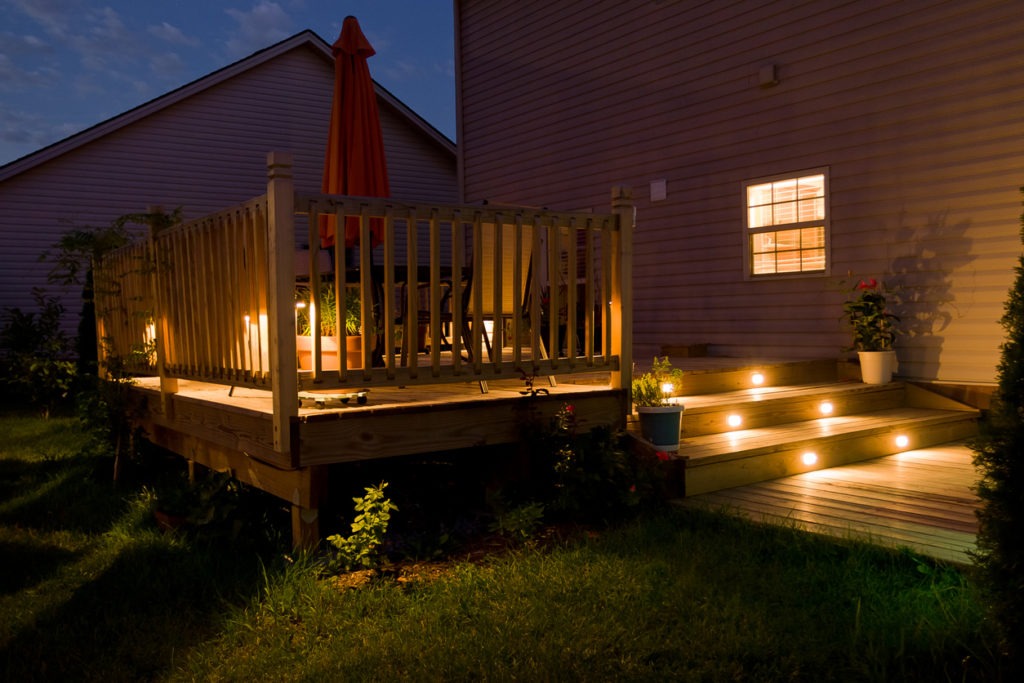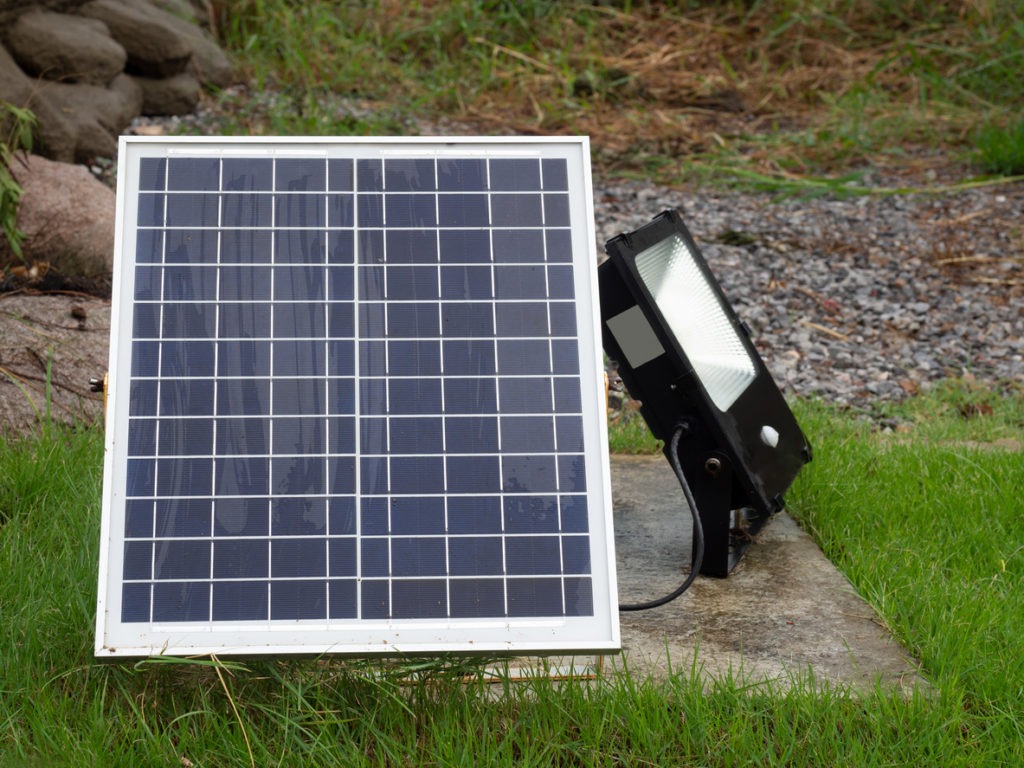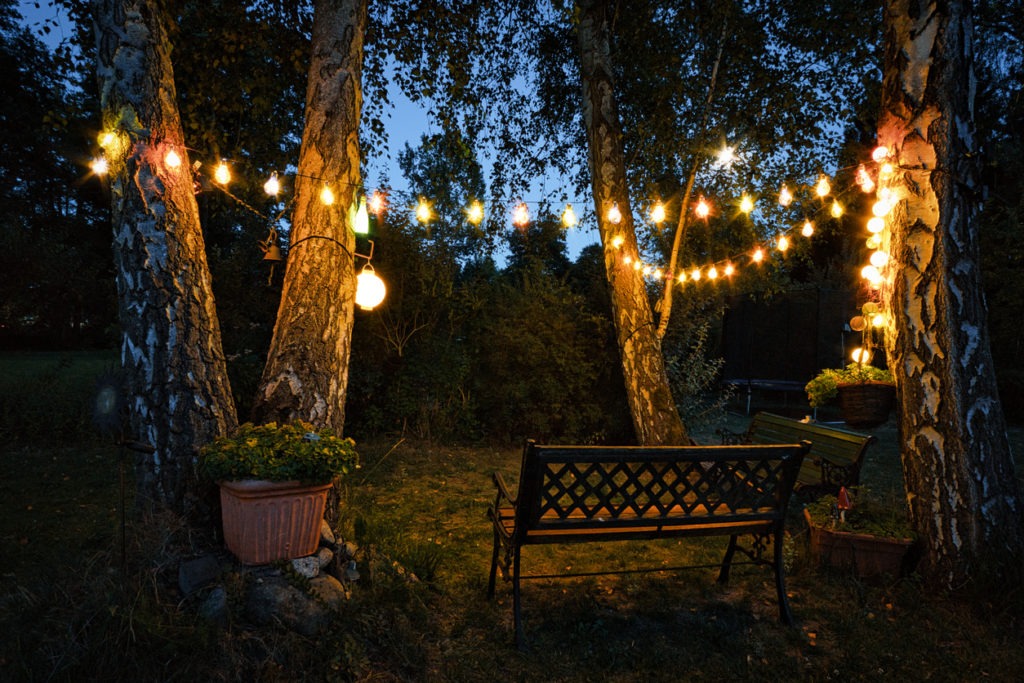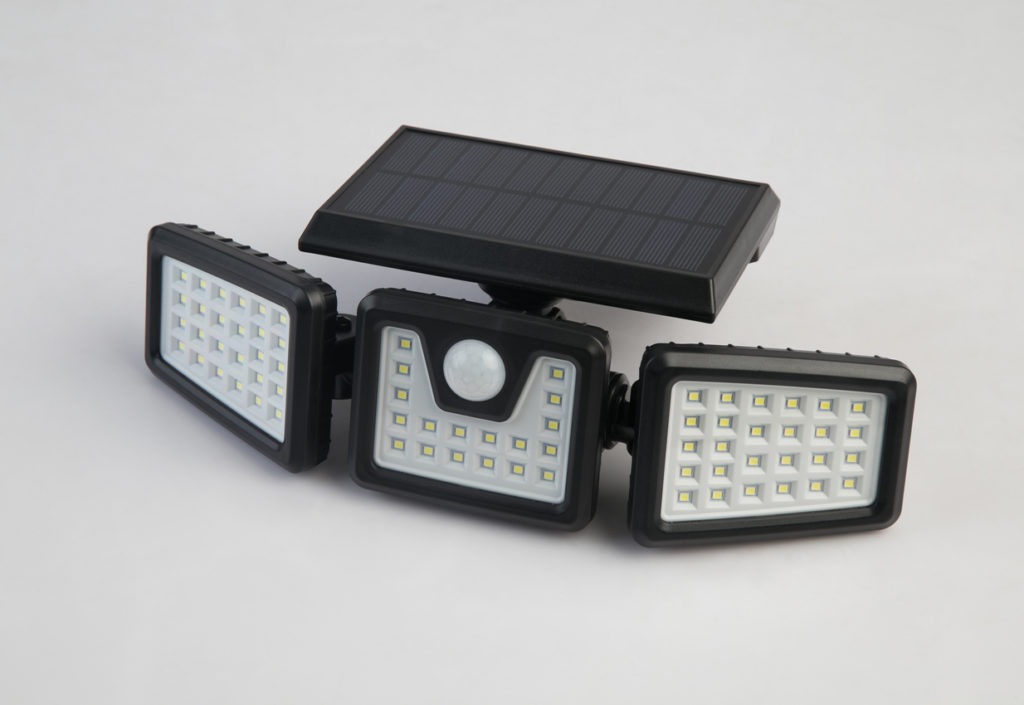Solar-powered lighting is the perfect way to enhance your yard at night. Whether you’re looking for something whimsical or something that adds a touch of elegance, there are solar-powered lights for every occasion.
Solar-powered lights are also easy to install, so if you’re intimidated by the idea of working with electricity, don’t worry! With these handy devices, you can light up your lawn without worrying about electrical work or wiring. It would be best if you had some sunlight and a little time.
What Are Solar-Powered Lights?
Solar-powered lights are a great alternative to traditional lighting options. They’re environmentally friendly and can help you save money on your energy bill.
Solar-powered lights use the sun’s energy to power them, so they don’t rely on electricity from your home or office. Instead, they store that energy in batteries that last for up to 10 hours at a time.
Solar-powered lights come in all shapes and sizes. Some are small enough to fit in your pocket, while others are large enough to fill up an entire yard with light!
At night, these lights are helpful because you can use them as a security measure by placing them around your property or driveway so that intruders know where not to go. Suppose you have kids or pets who like to run out at night without a flashlight. In that case, these lights will also give off enough light for them not to trip over anything dangerous on their way back inside after dark!
Why Use Solar-Powered Lighting?
Solar-powered lighting is a great way to save money and help the environment.
Solar-powered lights use the sun’s rays to power the light bulb, so there’s no need to plug them in or worry about changing batteries. Solar lights are also environmentally friendly because they don’t emit toxic fumes like traditional bulbs or produce hazardous waste like batteries.
If you’re interested in making a change that will benefit your pocketbook and the planet, here are some reasons why you should consider switching over to solar-powered lighting:
- You’ll save money—not only on electricity but also on replacement bulbs and batteries.
- Solar-powered lights can be used in any weather, even if it’s raining or snowing outside. You don’t have to worry about turning them on when you’re going to be out for a long time.
- The light is safer because it won’t cause fires or injuries from electrical shock if something goes wrong with your wiring system (such as during a power outage).
- Solar-powered lights are easy to install and can be placed anywhere there’s enough sunlight throughout the day, such as near your driveway or yard. They’re useful for areas that aren’t near electrical outlets (such as campgrounds).
Things to Consider When Choosing Solar-Powered Lighting
When choosing solar-powered lighting, a few key factors should be considered.
Light Output
The brightness of a light is measured in lumens, and the higher the lumen number, the brighter the light will be. You’ll want to ensure that the solar panel provides enough power to keep the light running throughout the day and night. If you’re looking for something with a wide coverage area, look for a light with an output of at least 500 lumens or more.
Light Temperature
The color temperature of your light will also affect how much energy it uses and how bright it appears. For example, suppose you have an LED bulb rated at 3000K or 4000K. In that case, it will appear brighter than one with a lower rating, like 2700K or 3000K, because those bulbs have a warmer hue (which means they emit more reds and yellows).
Recharge Time
The recharge time for a solar-powered light is the time it takes for the battery to fully charge from empty. This can vary from 30 minutes to 10 hours, so you may want to consider how long you’ll be using your light before buying one.
Battery Size – Runtime
The first thing to consider when choosing a solar-powered light is how long it will last on a single charge. The amount of time it takes to fully charge your light will vary depending on the size of its battery and the type of battery it uses. The larger the battery and the more efficient the technology inside, the longer it will last between charges. That’s important because it means less time waiting for your light to recharge!
Solar Panel Type
There are two types of solar panels: mono-crystalline and polycrystalline. Mono-crystalline panels are typically more efficient at converting sunlight into electricity than polycrystalline panels. Still, they also tend to be more expensive. If you’re looking for efficiency, go with mono-crystalline panels. If you want something less expensive but efficient, go with polycrystalline panels.
Materials
Solar panel lights are made up of different materials like plastic and metal. The material used will affect how durable your light is and how long it lasts. You’ll also want to ensure the material is weather-resistant, so it doesn’t get damaged by rain or snow. You may even want to consider using stainless steel or aluminum if you’re worried about rusting over time.
Features and Accessories
The first thing to look at is the features and accessories that come with your solar light. Some might include a remote control or a motion sensor, which can come in handy if you want more control over how your light works. Others might have security features like a locking mechanism or even an alarm feature that sounds when someone tries to tamper with it. The more features you get in one package, the more expensive it will be, so ensure you’re getting what you want!
IP Rating
An IP rating is an international standard that measures how resistant a product is against water damage (IP) or dust/grime buildup (D). A higher number indicates better protection against these elements; for example, an IP67 rating means that dust won’t get inside your product unless immersed underwater for up to 30 minutes (1).
Different Types of Solar-Powered Yard Lights
They come in all shapes, sizes, and uses: from spotlights that illuminate pathways to patio lights that highlight your dining area. They can be used for security purposes or simply for decoration. Solar yard lights come in various shapes, sizes, and types. It’s important to understand what each type is best suited for so you can make an informed decision about which one(s) are right for you.
Solar Pathway Lights
Suppose you’re looking to illuminate your walkways and driveways without worrying about wiring or power lines. In that case, these solar pathway lights are the perfect fit. They have a built-in sensor that activates when people approach the light, so they turn on automatically when someone needs them most! These lights provide plenty of illumination without needing additional wiring or electrical connections—place them where you need them and enjoy brightened paths all season long!
Solar Spotlights
This type of solar light can be used as a way to illuminate entryways and pathways. They are typically installed on top of posts to focus their light where it’s needed most. Solar spotlights can be easily installed by anyone who has basic DIY skills. However, they may not be bright enough for larger yards or areas that need more lighting than others. Solar spotlights also require direct sunlight to work properly—if the sun isn’t shining directly on them during daylight hours, then they won’t work at all!
Solar Patio Lighting
These provide ambient light on your patio or deck area at night. They’re perfect for illuminating tables and areas where you may want to sit outside with friends or family members at night. They come in different sizes and colors, so you can find one that matches the style of your home’s exterior design.
Solar Flood Lights
These small floodlights provide an intense beam of light that illuminates any area where they are installed. They can be used as security lights around your home’s perimeter or as decorative lighting fixtures for large trees or bushes in your yard. They’re easy to install and only require two wires (positive and negative). There’s no need for complicated wiring when installing these lights around the perimeter of your home’s property line!
Decorative Solar Lights
Decorative solar lights are an easy way to add light to any area of your property. These lights come in multiple shapes and sizes, allowing you to find something that fits perfectly with the style of your home or garden. They also have different luminescence options that can be used to customize their appearance and brightness level based on your needs.
Portable Solar Lights
These lights can be moved around your yard wherever you want them—they usually have a hook on top so you can hang them from trees or other structures. These lights are great for lighting up large areas like patios or decks without blocking out too much sunlight—you don’t have to worry about installing wiring!
LED vs. CFL vs. Incandescent Light Bulbs for Solar-Powered Lights
When you’re looking for lights for your solar-powered home, you have a lot of options. But when comparing LED vs. CFL vs. incandescent lights, it can be hard to know which will work best for you. Here are some things to keep in mind:
Incandescent lights are the traditional light bulbs used in most homes today. They have been around since 1879 and will continue to be used until they are no longer produced by manufacturers due to their energy efficiency and longevity.
CFLs are compact fluorescent lights that use less energy than incandescent bulbs and last longer than fluorescents. They were designed with an average lifespan of about 10,000 hours—about eight times more than an incandescent bulb’s lifespan.
LEDs (light-emitting diodes) are the newest lighting technology available today. They use even less energy than CFLs and last even longer (up to 50 times longer than an incandescent bulb).
Conclusion
Solar-powered lighting for your yard is a great way to add extra ambiance to your outdoor space. It’s also a smart way to save money on electricity and help the environment since you’ll be reducing your carbon footprint.
We hope this article gave you some ideas about how solar-powered lighting can enhance your backyard!
